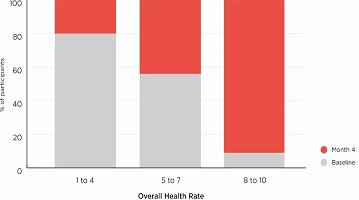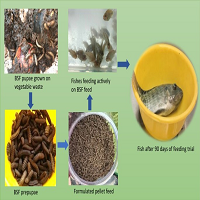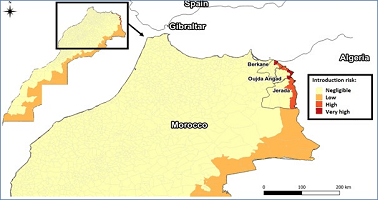Pancreatic Ductal Adenocarcinoma (PDAC) is one of the most aggressive and lethal tumors, representing the fourth most common cause of cancer death in the Western world, with an estimated incidence of more than 40,000 cases per year in the United States. Despite continuous progress in imaging, surgical techniques, intensive care, and chemotherapeutic approaches, the current overall 5-year survival is less than 6%.1,2
In carcinoma progression, including PDAC, cancer cells acquire their metastatic phenotype undergoing a complex step-wise process defined as Epithelial-To-Mesenchymal Transition (EMT), leading to a “phenotypic switch” of epithelial cells to mesenchymal cells.3
The epithelial phenotype is characterized by distinct, well demarcated intercellular adhesive structures, and apical-basal polarity, all mediated by the expression of E-cadherin on the plasma membrane of the cell. The EMT-related phenotype of carcinoma cells is characterized by the loss of epithelial features, including loss of cell adhesion and polarity, down-regulation of E-cadherin, cytoskeleton reorganization by expressing vimentin and α-Smooth Muscle Actin (αSMA). Moreover, the acquisition of motile properties and secretion of Matrix Metalloproteinases (MMPs) leads to the disruption of basement membranes.3
The key event of EMT is considered the loss of E-cadherin, a transmembrane glycoprotein with its intracellular domain linked to β-catenin to form the E-cadherin/β-catenin complex, mediating cell-cell adhesion and playing a major role in the control of epithelial cell architecture, differentiation and phenotype.
Interestingly, the EMT process can exhibit different characteristics in different carcinoma cells, therefore sometimes is difficult to recognize the typical EMT-related phenotype and the events responsible of carcinoma progression. This is evident in PDAC, since it was shown that 6 out of 7 PDAC cell lines maintain E-cadherin expression on the cell membrane, and that the expression of some EMT markers in PDAC are similar than in benign pancreatic ducts.4 The point is: how is it possible that PDAC cells exhibiting highly invasive and malignant behavior retain a differentiated epithelial phenotype? Do these cells undergo EMT? Moreover, what is the role of E-cadherin in these cells?
To understand this apparent inconsistency, we have to consider that some invasive and metastatic carcinoma cells possess morphological and molecular characteristics typical of well-differentiated epithelia, including high levels of E-cadherin and the presence of cell junctions and cell polarity, possibly due to an incomplete EMT.5 Carcinoma cells exhibiting an epithelial morphology were described also in prostate6 and breast cancer.7,8
Moreover, EMT is not an “all or nothing” event, but rather a multistep process that manifests in a broad range of phenotypic changes, not occurring consecutively and not all necessarily present in a given sample.6 According to this suggestion, epithelial-related phenotype and mesenchymal markers can be concomitantly expressed in the same cell.
Finally, a relevant point is the modality adopted by carcinoma cells for invasiveness. The mode of cell migration and invasion was originally classified based on the morphology of migration patterns. As main categories, cell move either individually (amoeboid or mesenchymal) or collectively (the migration of cohesive multicellular units). Collective cell migration is pivotal in remodeling complex tissues and tissue compartments, and also contributes to cancer progression by local invasion.9,10
As opposed to individually migrating cells, during collective migration, the rear of the front cell retains intact cell-cell junctions, thereby mechanically holding the cells together and increasing the efficiency of multicellular coordination. According to this model, invasive carcinoma cells may adopt a collective migration characterized by invasive multicellular aggregates containing well-differentiated cells retaining epithelial morphology and cohesiveness, that collectively invade within the adjacent tissues. In this situation, collectively migrating cells maintain their cell-cell junctions, and migrate in clusters forming invadopodia where the release of MMPs leads to the proteolytic breakdown of ECM in the tumor microenvironment.11 This was described for significant number of cancers, including certain breast, prostate, large cell lung and ovarian cancers: they do not lose E-cadherin expression and use collective migration and invasion.11,12
In the last years we focused our attention to better understand the role of EMT in PDAC, with particular attention to E-cadherin expression. We analyzed the phenotype of three PDAC cell lines (HPAF-II, HPAC and PL45) in relation to the expression of the main EMT markers, and we found that these cells, although highly invasive, maintained E-cadherin and the E-cadherin/β-catenin complexes at cell boundaries, suggesting that adherens junctions are preserved and functional.13,14
Interestingly, the analysis of the same PDAC cells grown in 3D-spheroids revealed that the phenotype of PDAC cells cultured in 2D-monolayers or in 3D-spheroids is different relatively to expression of some EMT markers. In particular, some “Mesenchymal” markers such as collagen type I, became evident only in PDAC cells grown in 3D-spheroids, and were concomitantly expressed together with E-cadherin.
These experimental findings strongly support the previously suggested role of 3D cell cultures as a useful experimental tool, allowing to mimic the functions of living tissues and providing some keys to the information encoded in the tissue architecture.15
Many of these studies have demonstrated the particular power of 3D-spheroids to gain insight into metabolic and proliferative gradients in cancer cells, and the importance of 3D cell-cell and cell-matrix interactions.16,17,18,19
Gene expression in 3D is much closer to clinical expression profiles than those seen in 2D, therefore in vitro 3D culture systems offer the possibility to investigate aspects of cancer tumor biology and pathophysiology maintaining a 3D cell arrangement reflecting the in vivo situation in relation to cell-cell interaction and differentiation patterns.20
Previous studies demonstrated that cancer cells grown in 3D exhibit different gene expression levels, compared with the same cells cultured in 2D. In particular, in melanoma cells it was described that cell cultures in a 3D system, allowing structural modifications of the architecture of tumor cell cultures in monolayer and the maintenance of cell-cell interactions, exhibited a significant up-regulation of the expression of a number of genes previously shown to play a role in melanoma progression and metastatic process.21
Our experimental findings in 3D-spheroids can contribute to describe the phenotype of PDAC cells in relation to EMT, suggesting a concomitant expression of “epithelial” and “mesenchymal” markers in these cells. This suggests an EMT-related phenotype for PDAC cells and strengthens the general assumption that an inverse correlation between E-cadherin expression and invasive potential of carcinoma cells is not absolute. According to these observations, we can also hypothesize that PDAC cells adopt a collective migration mechanism, but further experiments will be necessary to definitively clarify the role of EMT in PDAC progression.
We are convinced that the study of EMT markers in PDAC 3D culture systems, such as spheroids, could provide a better understanding of the complexities of the tumor context and allow to more clearly understand the biology, development and progression of PDAC, and possibly to develop new therapeutic strategies to finally improve the treatment effectiveness of patients with PDAC.






